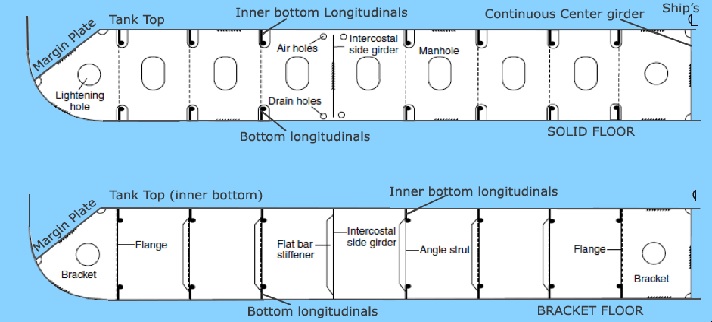A fore and aft strength member connecting the athwartships floors. Some vessels are longitudinally strengthened by having the frames run in a fore and aft direction as opposed to transverse framing.
Additional longitudinals are to be found in areas where pounding can be anticipated when the vessel is at sea.
In longitudinal framing, very heavy transverse frames are spaced much further apart than in traditional framing—about 12 feet (3,700 mm) A large number of longitudinal frames are then attached to hold the shell plating. The longitudinal frames at the sides fit into notches cut into the transverse frames, while the ones near the bottom of the ship are sometimes made continuous between transverse bulkheads. The transverses are connected to the shell plating at heavy angles and with a tank top are cut at the margin plate.
Under the tank top, except for notches cut for the bottom and tank top longitudinals, the transverses are much like ordinary floor plates. The deck longitudinals furnish ample strength, even when large hatch openings must be accommodated.



Leave a Comment